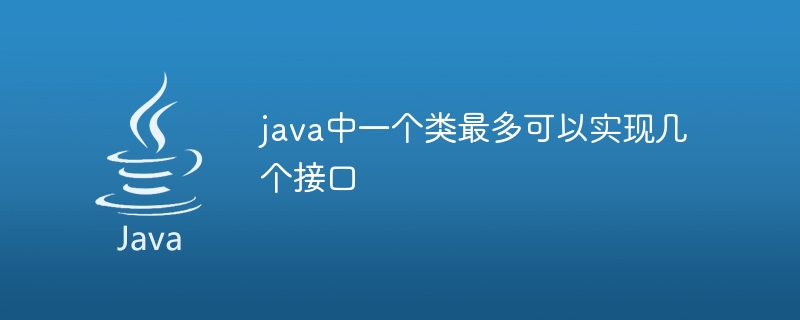
A class in Java can implement any number of interfaces because it uses a single inheritance and multiple implementation model. An interface defines a method contract, and classes must implement these methods to satisfy the contract. Implementing multiple interfaces allows a class to obtain different functionality, such as implementing both List and Set to obtain list and set functionality.

#A class in Java can implement up to any number of interfaces.
This is because Java adopts a single inheritance and multiple implementation model, which allows a class to implement multiple interfaces, but can only inherit one class. An interface is essentially a contract that defines a set of methods that a class must implement to satisfy the contract.
Implementing multiple interfaces allows a class to obtain the functionality of its defined methods and constants, allowing more complex features and behaviors to be implemented. This is useful in situations where you need to access different functionality or follow different protocols.
For example, a class can implement both the List and Set interfaces to obtain the functions of lists and sets respectively. Alternatively, a class can implement the Runnable and Callable interfaces in order to use it in a multi-threaded environment for concurrency or to return results.
In short, a class in Java can implement any number of interfaces, which provides flexibility and code reusability, allowing developers to build classes with complex functionality as needed.
The above is the detailed content of How many interfaces can a class in Java implement at most?. For more information, please follow other related articles on the PHP Chinese website!
 What is the return value of the function
What is the return value of the function
 special symbol point
special symbol point
 Common encryption methods for data encryption storage
Common encryption methods for data encryption storage
 Introduction to commands for creating new files in Linux
Introduction to commands for creating new files in Linux
 Today's latest official news of PaiCoin is true
Today's latest official news of PaiCoin is true
 bios cannot detect solid state drive
bios cannot detect solid state drive
 location.search
location.search
 Excel table slash divided into two
Excel table slash divided into two




